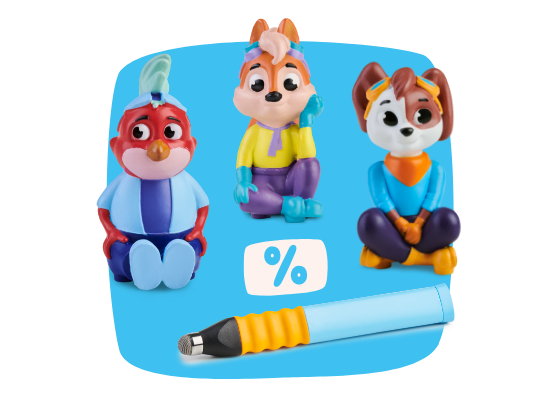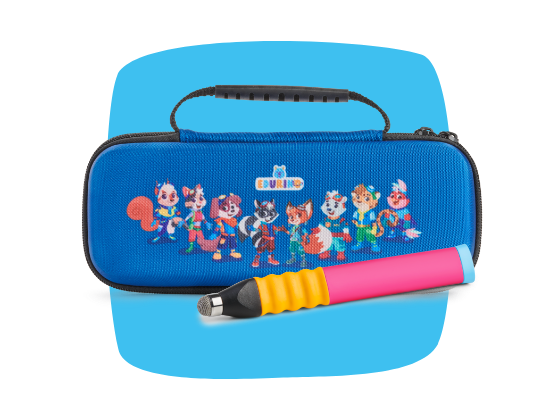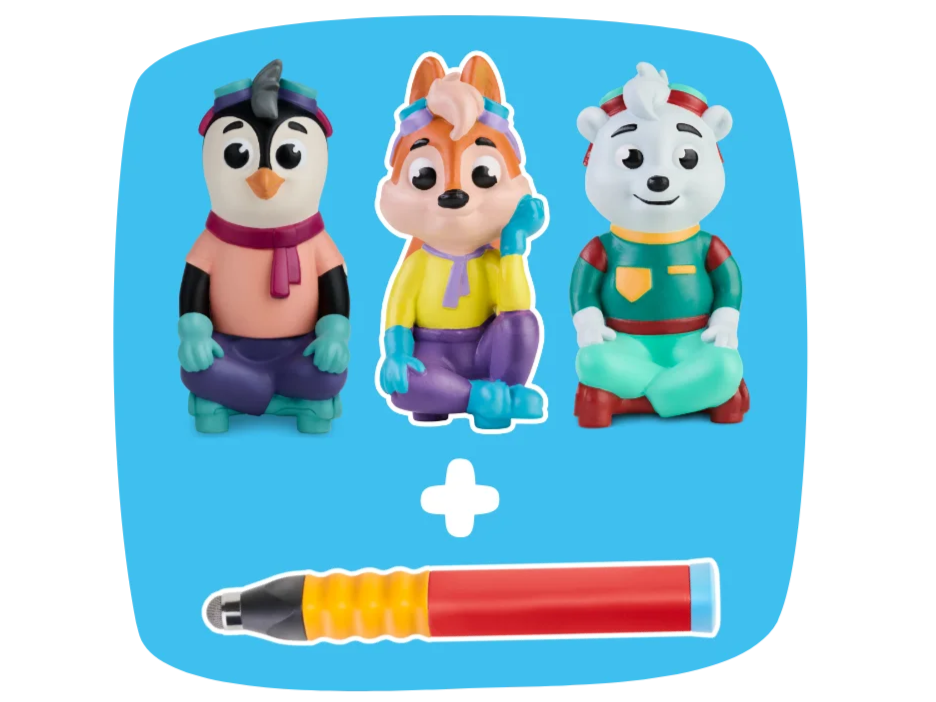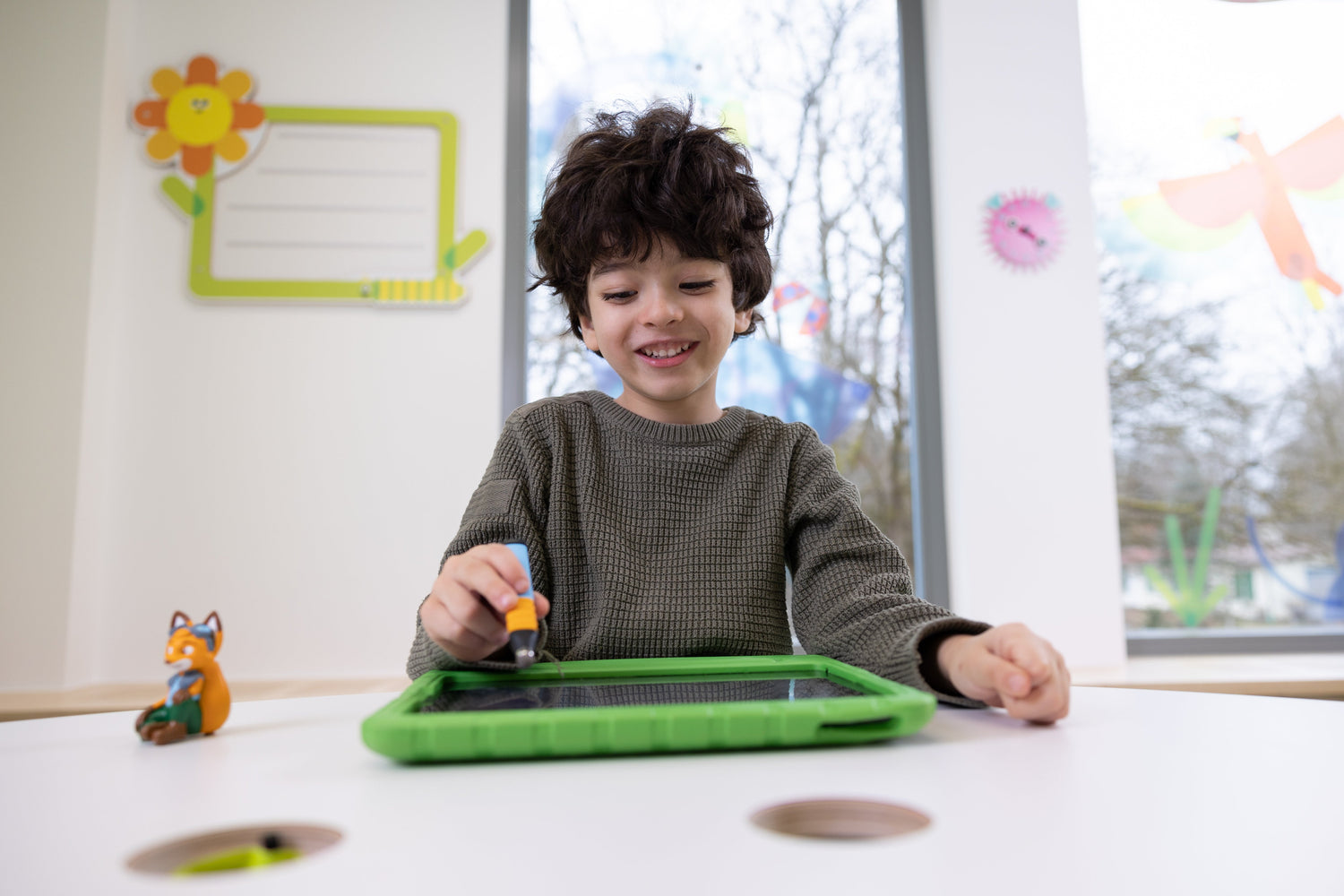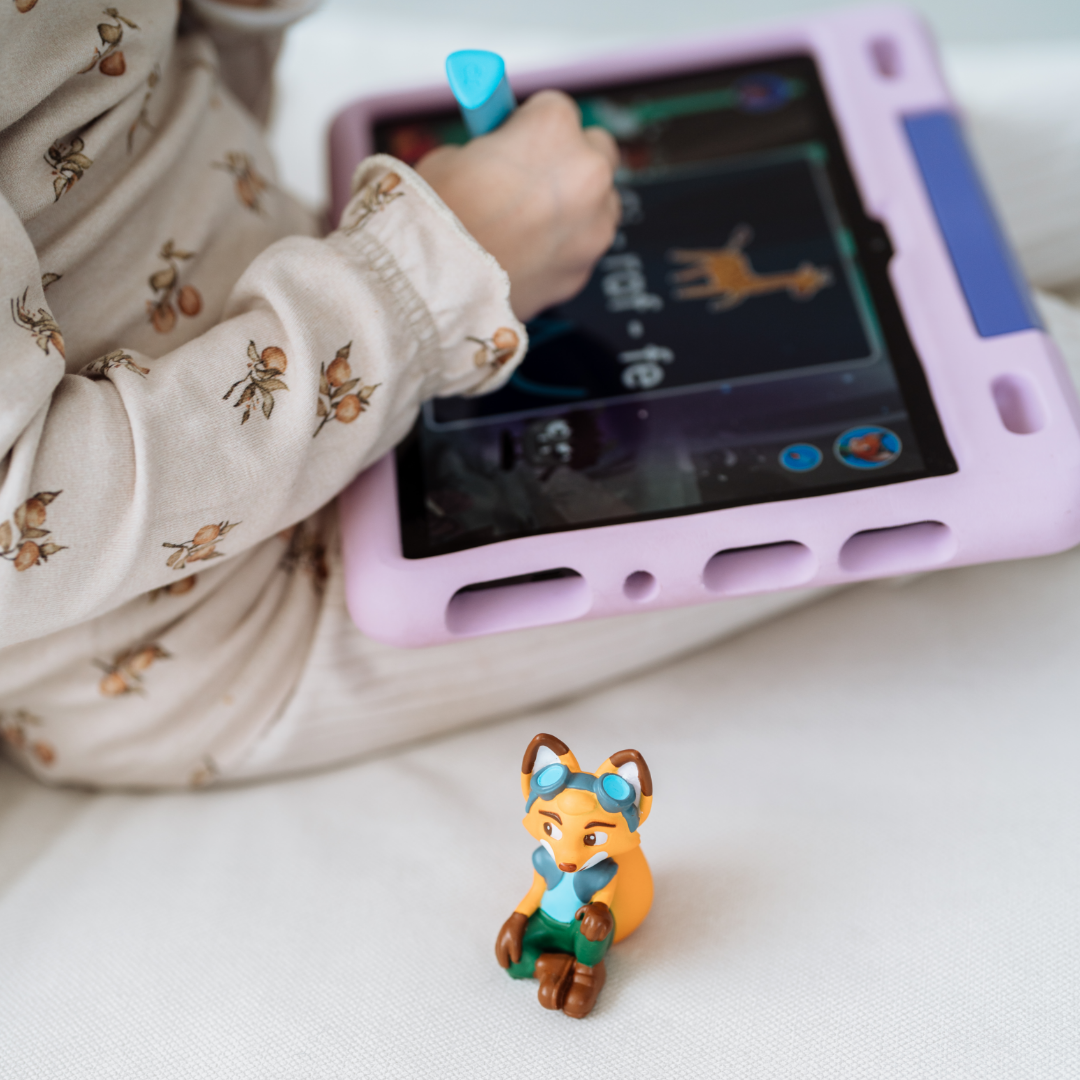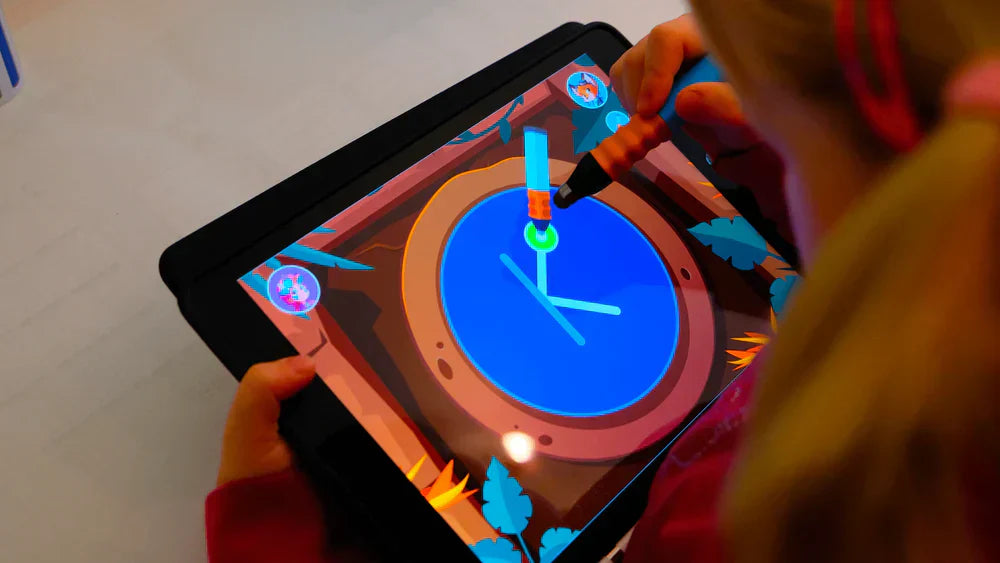For children to effortlessly put letters on paper, it takes more than just a pencil: Good pencil grip, appropriate finger pressure, and the right hand preference (right or left) play a key role. All of this falls under what is known as graphomotor skills—the motor skills that underlie writing.
What is graphomotor skills – and why is it important for learning to write?
Before children can write whole words or sentences, they must first develop a fundamental skill: graphomotor skills. These skills describe all the movements necessary to draw precise lines, shapes, or even letters with the hand. This includes the correct use of a pen, hand-eye coordination, and control of the fingers, wrist, and arm.
Graphomotor skills are therefore the foundation for learning to write. They determine whether a child can write letters fluently and legibly on paper or whether writing becomes a strain. Especially at preschool age, it is therefore worthwhile to integrate playful graphomotor exercises into everyday life. This lays the foundation for healthy writing development – without pressure and entirely at one's own pace.
Good to know: Many difficulties in learning to write aren't caused by a lack of concentration, but rather by unpracticed movement patterns. Children who don't hold their pen correctly are more likely to cramp up and lose interest in writing. Therefore, it's important to pay attention to small signs early on and provide timely support.
6 graphomotor exercises for a good start to writing – practical & playful
With these six simple graphomotor exercises for children, you can promote your child's fine motor skills, strengthen the joy of learning to write – and, at the same time, lay the foundation for neat handwriting.
✏️ Writing opportunities in everyday life: How your child develops a love of writing
Children learn best when they see a reason for doing so. Instead of abstract worksheets, real writing opportunities help: writing a shopping list, painting their own name on a door sign, or designing a postcard for Grandma and Grandpa. This way, children experience writing as something useful and, at the same time, practice their graphomotor skills.
💬 Take the pressure off: How to motivate your child to write
Not every child is eager to write right from the start, and that's perfectly fine. It's important that parents don't associate learning to write with pressure to perform. Not everything has to be perfect and correct in the beginning. Praise small improvements, let your child write down their own ideas (even if they're missing letters), and show interest in their emerging writing skills. This creates a positive attitude toward writing that motivates and lasts.
✋ Hold a pen correctly: This is how it works for children with simple aids
Correct pen grip is crucial for relaxed and sustained writing. Children who hold the pen too tightly or incorrectly tire more quickly and lose the joy of writing. Make sure the pen is held loosely in a three-point grip. Ergonomically shaped pens, such as those included in the EDURINO starter set —specially designed for small hands—are helpful.

🪑 Ergonomic sitting: The correct posture when learning to write
A stable seat with a straight back, an upright head position, and both feet on the floor creates the foundation for relaxed writing. If the table or chair isn't suitable, children often resort to compensatory movements – this can negatively impact their pen grip. A well-arranged workstation helps to specifically promote fine motor skills while writing.
📄 Optimize the blade position – especially important for left-handers
There's a little tip for page position depending on your hand preference. For right-handed people, it's recommended to rotate the writing surface in front of you about 30 degrees counterclockwise. Left-handed people can even rotate their writing surface up to 45 degrees – this way, your writing isn't obscured by your writing hand and you prevent the ink from potentially smudging. A good page position allows for a better flow of movement and contributes to legibility.
🎲 Learn to write playfully – with exercises that are fun
Children love games—so use them when learning to write! Swing exercises, tracing patterns, forming letters out of play dough, or writing in sand are great ways to playfully promote graphomotor skills. Digital learning games like the EDURINO learning world with Mika are particularly motivating. They guide children through exciting stories and intuitively familiarize them with letters, rhymes, and writing movements.
Digital help for learning to write: How EDURINO supports
Sometimes it takes more than paper and crayons to inspire children to write. Digital learning resources can be a valuable addition – if they are child-friendly, ad-free, and pedagogically sound. This is precisely where EDURINO comes in.
With the EDURINO character Mika, children ages 4 and up discover writing in two lovingly designed learning stages. In the first stage, they learn rhymes, syllables, and sounds; in the second stage, they deepen their knowledge of letters and basic spelling rules. Everything is playful, interactive, and completely pressure-free.
A special highlight is the ergonomic stylus, specially designed for children's hands. It supports healthy pen holding and turns tablet exercises into a real movement experience – ideal for promoting graphomotor skills.
And best of all: The app also works offline, is ad-free, and offers a secure parental control area with a time limit function. This turns screen time into real learning time – safe, meaningful, and motivating.
Learning to write can be easy – with small exercises for great success
Learning to write is a process – and every little bit of progress counts. With targeted graphomotor exercises, proper pen grip, and plenty of playful motivation, parents can support their child wonderfully. This requires neither pressure nor perfection; above all, patience, fun, and positive stimulation.
Whether it's writing a letter to grandma, tracing curved lines, or using the appropriate learning figure on the tablet: when children develop a love of writing, they learn almost automatically.
🦊 Tip for getting started: The EDURINO character Mika guides your child step by step through a creative learning world around reading and writing.

